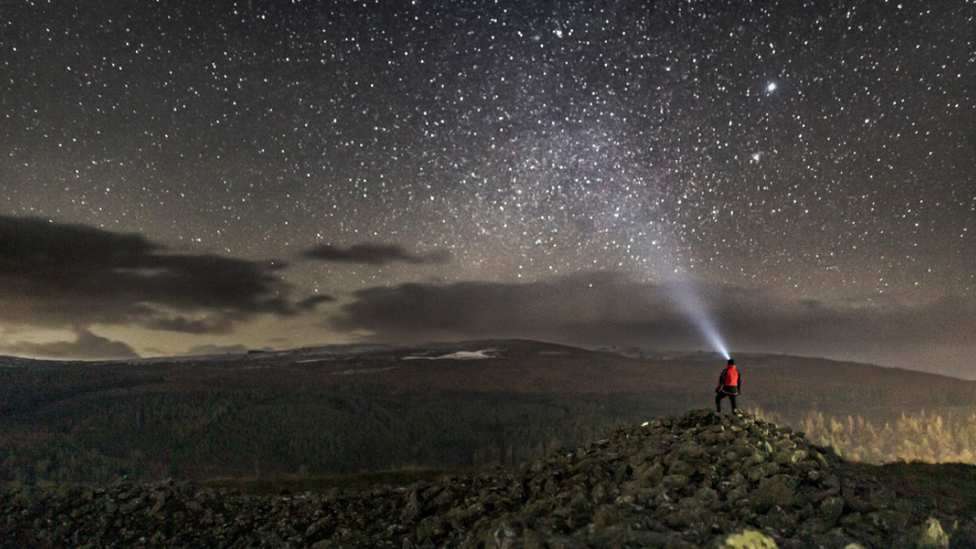Wales: More northern lights likely as sun cycle hits peak
- Published
Wales has been treated to a rare display of the spectacular Northern Lights.
Spectacular displays of northern lights seen for a second night in Wales will be more common over the next two years, a solar physics expert has said.
Professor Huw Morgan said it relates to a "busy period" for charged particles being able to reach the atmosphere.
With the Sun's 12-year solar flare cycle peaking in 2025 "we are more likely to see more events like this," he added.
More displays are expected in the coming nights.
"It is still rare to see in Wales," Prof Morgan said. "You need really good seeing conditions, a clear night and preferably up a hill in a dark place looking towards the north."
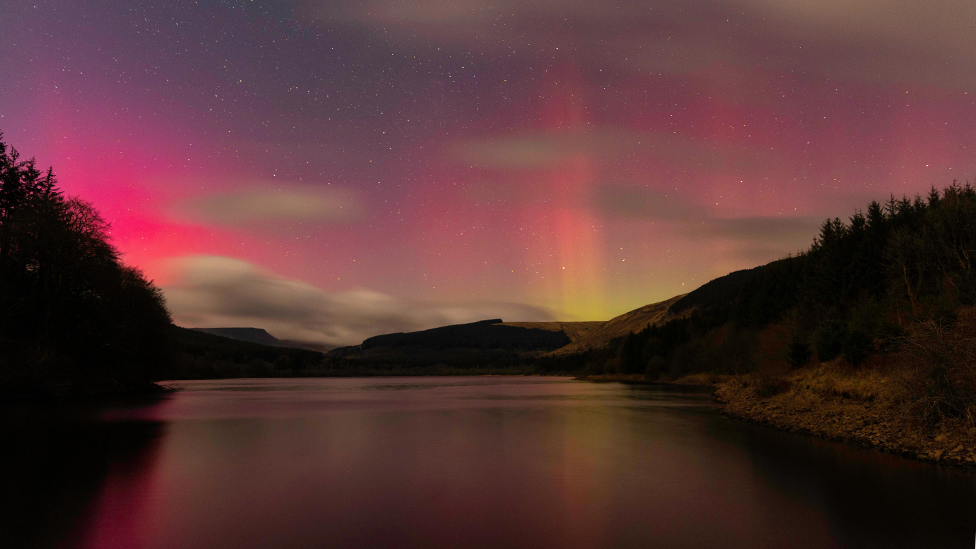
Northern lights reflecting onto water in Caerphilly county
Over the last few days, a strong solar flare erupted from the Sun's surface directing charged particles towards Earth that reached the atmosphere on Sunday night.
The particles interact with oxygen and nitrogen, emitting green and red colours over the poles.
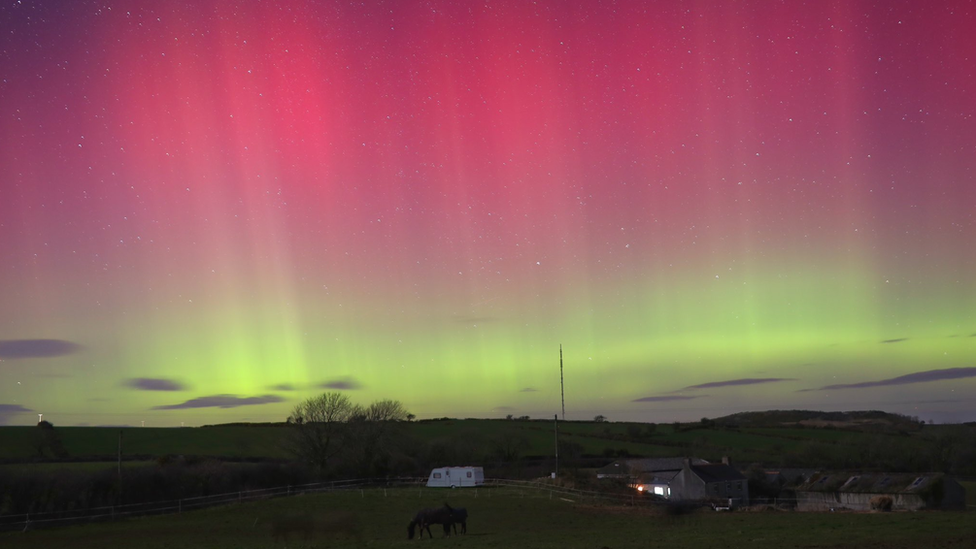
Colours stretched across half the sky during this display over Anglesey
Prof Morgan said "space weather" is forecast by the Met Office because of the damage severe storms can cause to communications and energy technology.
If a solar flare is strong enough, particles can travel to lower latitudes such as southern Wales.
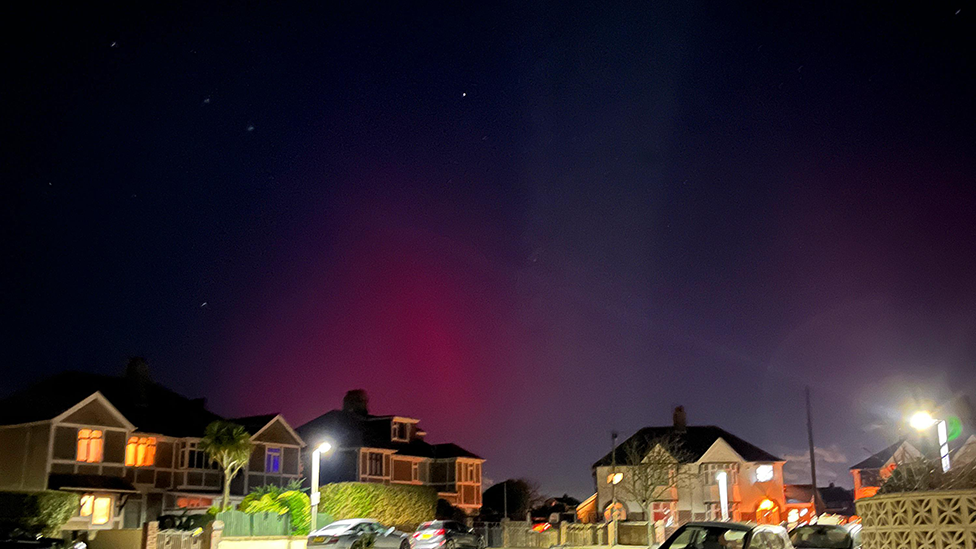
Northern lights could be seen as far south in Wales as Porthcawl in Bridgend county
BBC Weather Watchers photographed the aurora across many parts of Wales.
They were also seen on Ynys Enlli (Bardsey Island), off the Llŷn Peninsula in Gwynedd, recently named as Europe's first dark sky sanctuary.
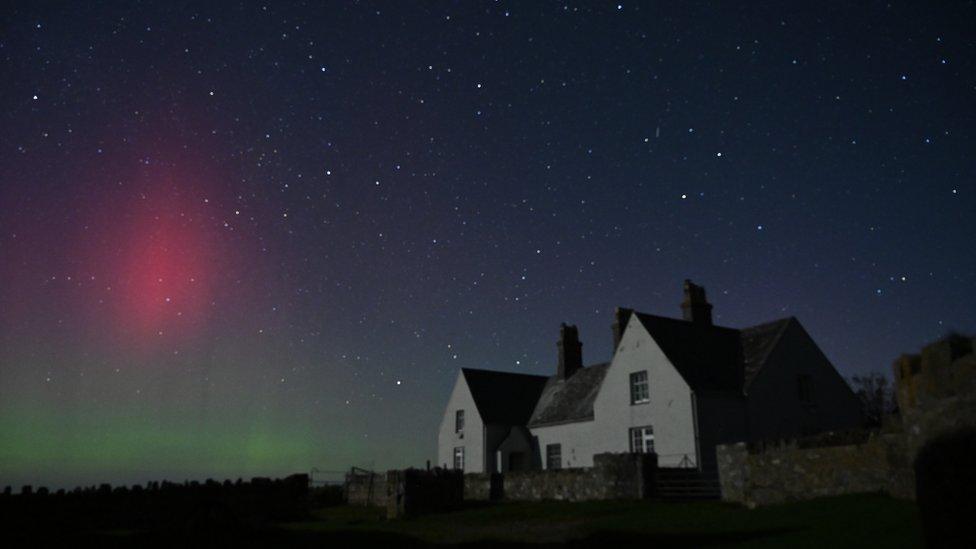
Northern lights were seen at Ynys Enlli, an island in Gwneydd which recently became Europe's first dark sky sanctuary
"It was great to have on our doorstep," said Sian Stacey, chair of the island's trust.
"It does help with exposure for Wales and Enlli on what a great place it is for dark skies."
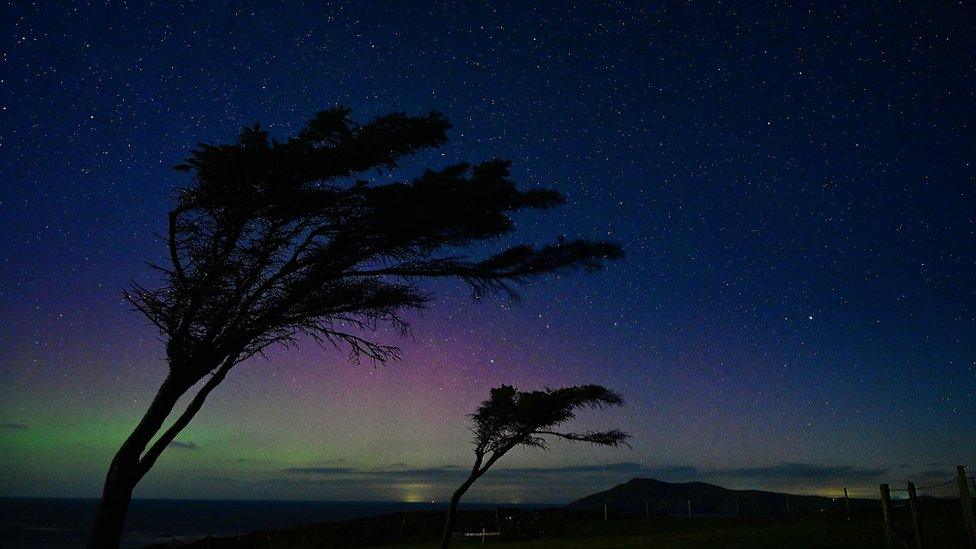
Another shot of the aurora over Ynys Enlli on Sunday evening
Ms Stacey said the recent activity might help the trust to find money for accommodation upgrades it wants to make so that visitors can stay in winter "when the night sky is at its best".
But Prof Morgan, head of solar physics at Aberystwyth University, warned the northern lights will remain a rarity in Wales because of its latitude.
"I would say it is something you list as a possible bonus for sky watchers in Wales, especially when the Sun is in a busy period," he said.
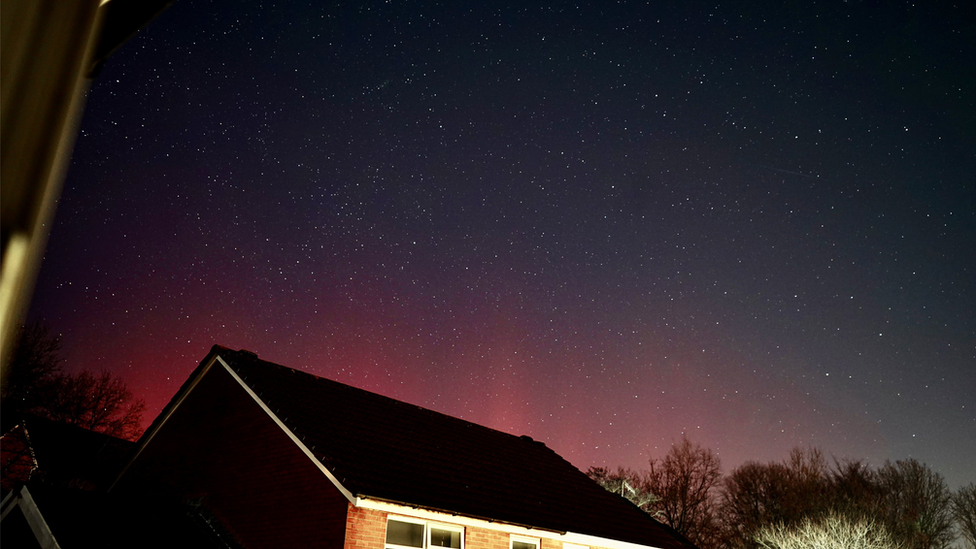
The pink in northern lights like in this photo from south Wales is caused by charged particles interacting with nitrogen

Bands of red and green over the sky in Staylittle, Powys
"You've got dark skies like in mid-Wales, so you are already in for a treat of seeing the stars, the Milky Way and planets in their glory.
"If there happens to be an auroral event like this it's a bonus, but it is quite a rare event in Wales."
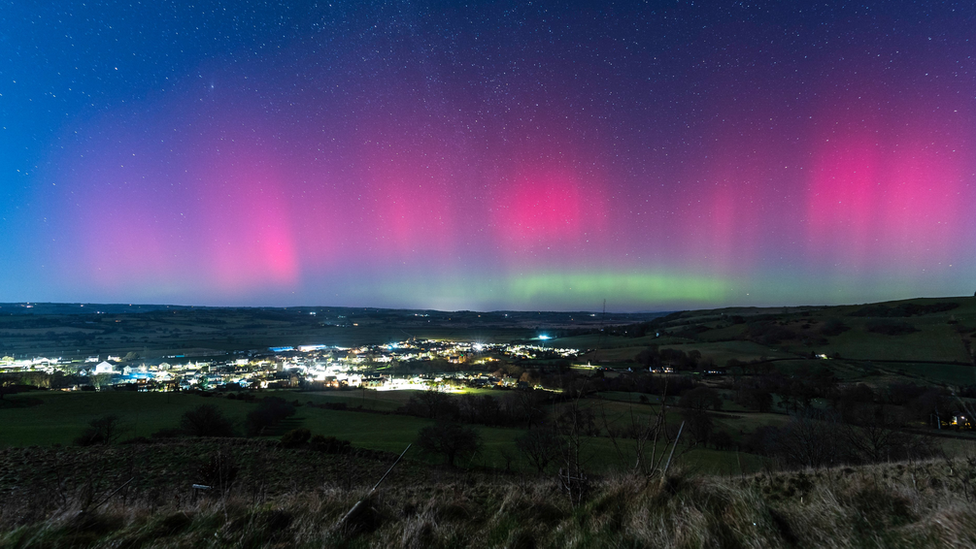
Ribbons of pink buffet the sky over Tregaron in Ceredigion
Prof Morgan said this week's displays pale in comparison to the Carrington event, external, a huge auroral display that occurred in 1859.
"It was like what we are seeing now but far more powerful," he explained. "The northern lights could be seen as far south as Cuba and Hawaii.
"Apparently they were bright enough in Wales for people to go out in the night and read a newspaper."
Related topics
- Published8 June 2022
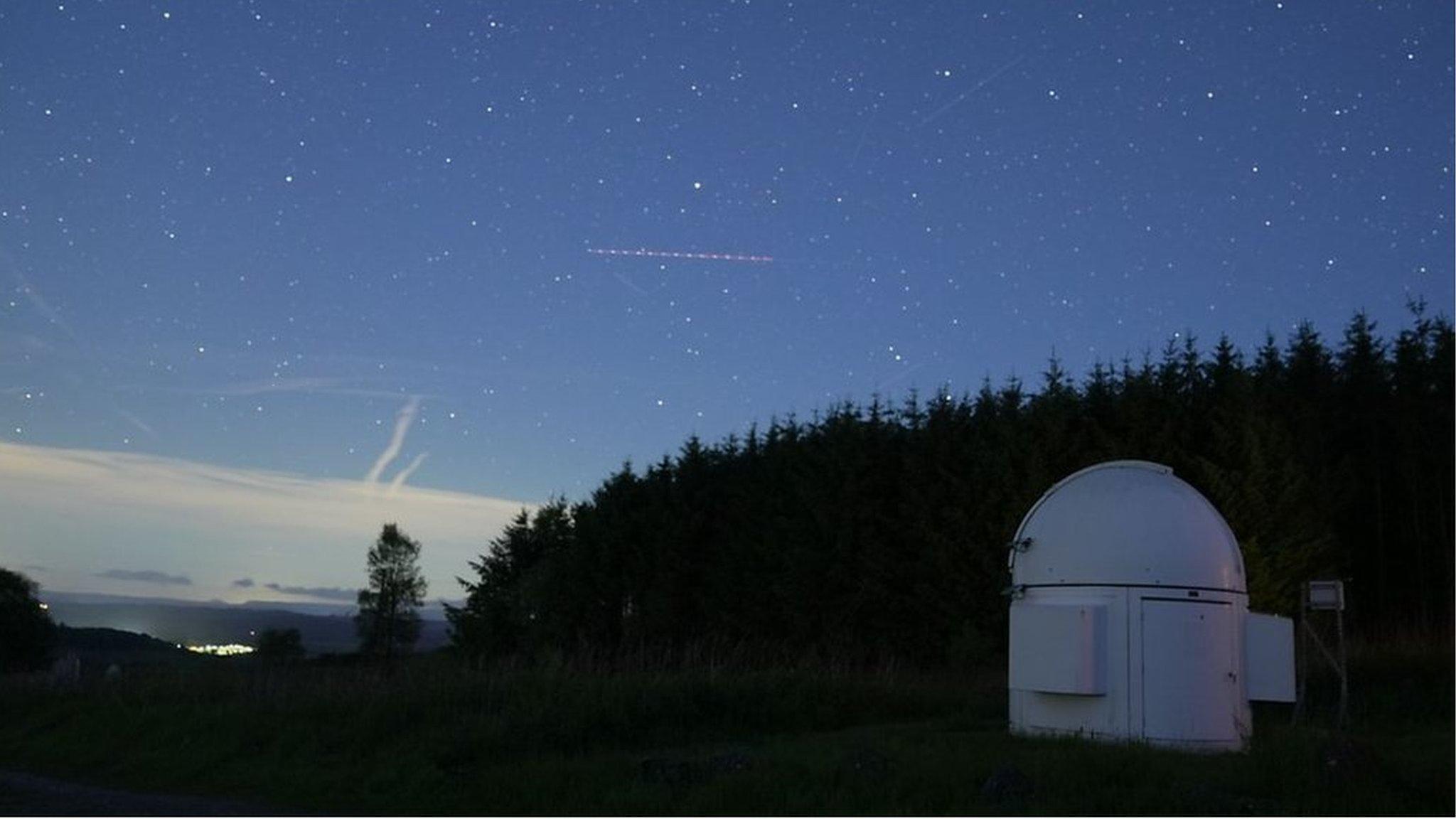
- Published23 February 2023

- Published20 January 2023
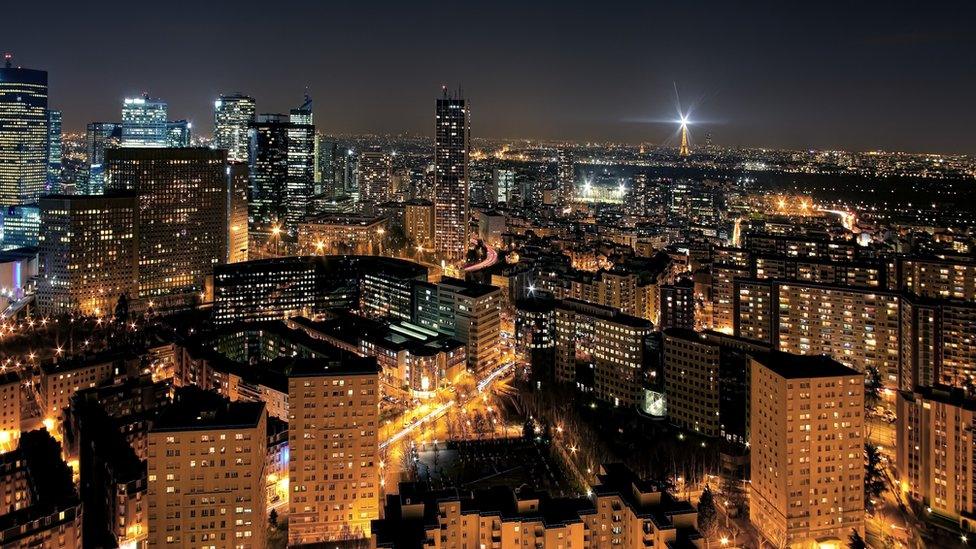
- Published24 February 2022
